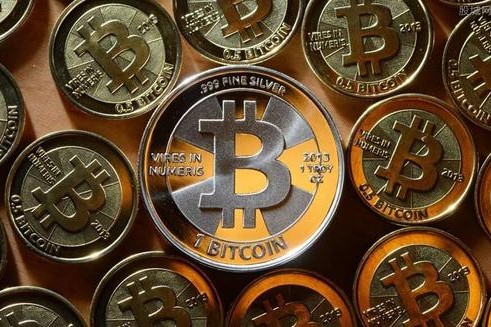时间:2024-04-08|浏览:7050
以色列和伊朗之间的紧张局势是几天前油价突破90美元/桶的直接触发因素,但油价上涨实际上有更深层次的根源——全球供应冲击加剧了人们对大宗商品驱动的通胀卷土重来的担忧。
墨西哥近期削减原油出口,加剧了全球原油供应紧张,促使全球最大生产国美国的炼油厂增加国内供应。与此同时,美国的制裁导致俄罗斯货物滞留在海上,委内瑞拉的供应可能是下一个。胡塞叛军仍在红海袭击过往的油轮,导致原油运输延误。此外,尽管局势动荡,欧佩克及其盟友仍坚持减产。
所有这些因素结合在一起造成了供应中断,令交易商措手不及。随着美国夏季驾车季节的临近,油价涨幅可能进一步扩大,有可能推动全球基准布伦特原油近两年来首次升至每桶 100 美元。这将加剧通胀担忧,给美国总统乔·拜登的连任前景蒙上阴影,并使央行降息的道路变得复杂化。
Energy Aspects Ltd. 创始人兼研究主管阿姆丽塔·森 (Amrita Sen) 在接受采访时表示,对于油价而言,“目前更大的推动因素是供应面”。 “我们看到了很多供应疲软的迹象,但全球总体需求良好。”
供应风险持续加大
由于总统安德烈斯·曼努埃尔·洛佩兹·奥夫拉多尔试图兑现让该国摆脱对昂贵燃料进口的承诺,美洲主要供应国墨西哥的石油运输量上个月下降了 35%,至 2019 年以来的最低水平。
据彭博社上周报道,由于国有石油公司墨西哥国家石油公司取消了与外国炼油厂的一些供应合同,该国所谓的含硫原油的出口可能会进一步萎缩。许多炼油厂都是为了加工这种重质、稠密的原油而设计的。
上周晚些时候,洛佩兹·奥夫拉多尔驳斥了有关墨西哥国家石油公司削减原油出口的报道,称其“不属实”。墨西哥国家石油公司将根据国内炼油能力的变化调整出口。此外,多斯博卡斯炼油厂计划于四月开始生产柴油。
尽管如此,该传闻仍引起全球石油市场的轩然大波。火星混合原油是一种来自美国墨西哥湾沿岸的中密度含硫原油,最近几天的交易价格一直高于 WTI 原油。火星原油的交易价格通常低于 WTI 原油。上周四,布伦特原油触及每桶90美元,为去年10月以来的最高水平。摩根大通表示,到8月或9月,布伦特原油价格可能达到每桶100美元。
加拿大墨西哥湾沿岸冷湖原油的交易价格相对于 WTI 原油的折扣是近一年来的最小水平。作为中东中质高硫原油的主要基准的阿曼和迪拜期货合约也有所上涨。
The reduction in Mexican crude supplies follows supply disruptions both large and small in the U.S. U.S. crude production and inventories typically rise in January, but severe cold weather led to the opposite, with U.S. crude inventories below seasonal averages until the end of March.
Oil output from Mexico, the United States, Qatar and Iraq, which has pledged to curb output to make up for missed commitments to OPEC+, fell by a combined more than 1 million barrels per day in March, according to tanker tracking data compiled by Bloomberg.
Further tightening supply, OPEC+ members cut shipments of the medium-sour oil Upper Zakum by 41% in March from last year’s average, according to maritime intelligence firm Kpler. The UAE is shifting more of this crude to its own refineries, traders said. While the production cuts were expected and Abu Dhabi National Oil Co. is offering buyers another crude as an alternative, the drop in Upper Zakum exports amid widespread OPEC+ cuts has led to higher prices for the region’s crude.
Meanwhile, European crude markets were under pressure from Houthi attacks in the Red Sea, which diverted millions of barrels of crude from Africa, delaying some supplies for weeks. The disruption of a key North Sea pipeline, unrest in Libya and damage to a pipeline in South Sudan also contributed to the rise in prices. In addition, U.S. sanctions have prevented Russia from using some tankers that were previously used to deliver oil to buyers such as India.
Supply tightness is likely to intensify further in the coming weeks as the Biden administration is likely to reimpose sanctions this month as Venezuelan President Nicolas Maduro has shown no signs of following through on his promise to hold free and fair elections.
"Tight supplies of sour crude and the prospect of a summer driving season in the U.S. suggest a turning point is coming in the market," said Samantha Hartke, an analyst at analytics firm Sparta Commodities.
This is in stark contrast to a few months ago, when oil prices fell to their lowest in months as U.S. crude production climbed and Russian seaborne crude exports surged despite Western sanctions, leading the U.S. Energy Information Administration (EIA) to predict that global crude oil inventories would remain unchanged this quarter. But now, the agency expects inventories to fall by 900,000 barrels per day, equivalent to Oman's daily production.
 Global crude oil inventories may fall in the second quarter for the first time since 2021
Global crude oil inventories may fall in the second quarter for the first time since 2021
Oil prices may hit $100 again
The tightening of global crude oil supply comes as demand is rising. U.S. refiners are preparing to increase fuel production in the summer, when millions of Americans travel and gasoline consumption peaks. Gasoline inventories are tightening on the densely populated East Coast, and manufacturing activity in the United States and China is also signaling increased fuel use. In Asia, refining margins are about 50% above the five-year seasonal average, indicating strong demand.
Rising crude prices have disrupted the Biden administration's plans to replenish the U.S. Strategic Petroleum Reserve (SPR). After the outbreak of the Russia-Ukraine conflict, the U.S. SPR stockpile has experienced an unprecedented depletion, falling to a 40-year low. High energy prices are also a political risk for Biden. Higher oil prices have the potential to push retail gasoline prices to the critical psychological level of $4 per gallon, which currently averages $3.60 per gallon nationwide. This has heightened concerns that commodities will reverse the recent slowdown in consumer price (CPI) gains.
Oil prices helped ease U.S. inflation late last year, but are now pushing it back up. March CPI data, to be released on Wednesday, may prove this again. The headline CPI is expected to accelerate year-on-year, while the core CPI, which excludes food and energy, is expected to fall. The Bloomberg Index of major commodities has reached its highest level since November last year.
Vikas Dwivedi, global oil and gas strategist at Macquarie Group, said that the surge in crude oil prices could eventually force OPEC+ to reduce some of its production cuts. JPMorgan said that a sharp rise in oil prices above $90 could lead to global demand destruction and ultimately a fall in oil prices. But so far, this has not happened.
“There’s no question that the crude oil market is a fundamentally solid market,” Bob McNally, founder of consulting firm Rapidan Energy Group and a former White House adviser, said in an interview. “I think $100 a barrel is entirely possible, it just requires more pricing in of real geopolitical risks.”
The article is forwarded from: Jinshi Data

用戶喜愛的交易所

已有账号登陆后会弹出下载









